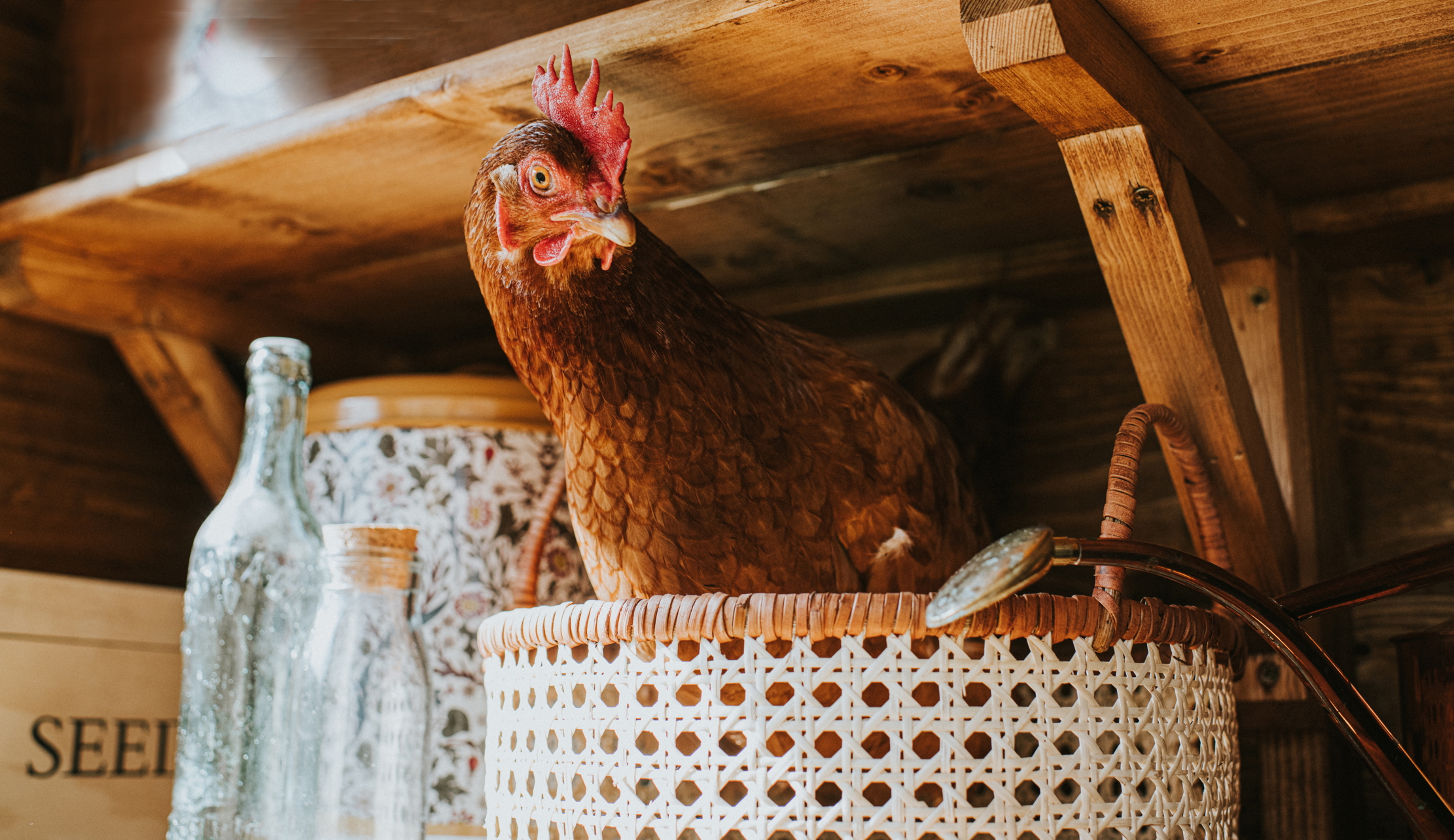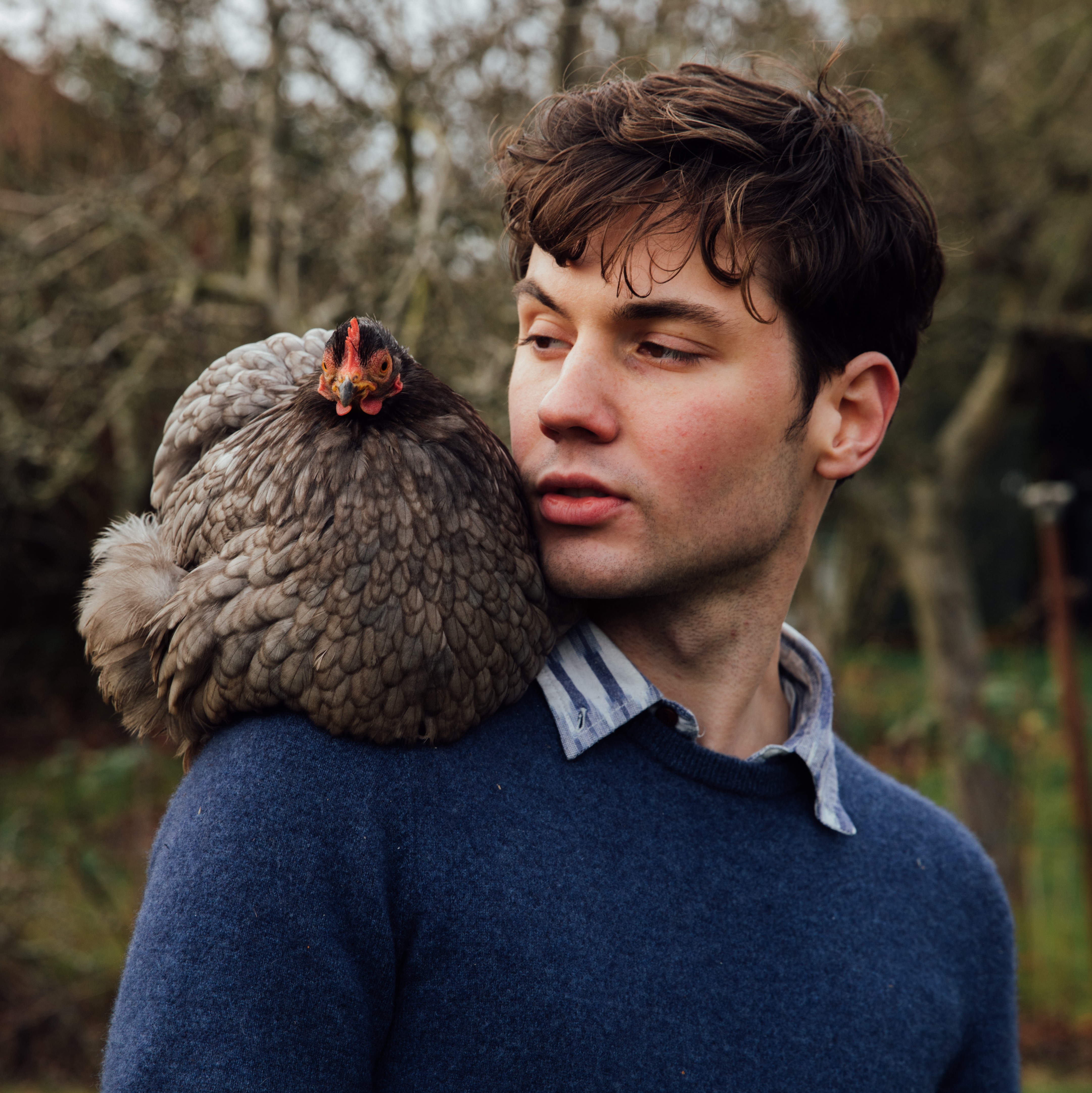Arthur Parkinson: When it comes to happy hens and yellow yolks, grass is king
Don't get too focused on the colour of an egg. If you provide your hens with a happy habitat, everything else will take care of itself.


It rained yesterday, and I am glad as that is good news for all concerned. It is especially good news if you happen to be a blade of grass.
The care of grass might not, at first, be something that your chicken-keeping thoughts consider, but it most certainly should be, as the happiest of hens and the most richly flavoured of eggs come as a result of regular access to green pastures.
Every now and then some bright social media TikTok foodie-of-the-moment waltzes into the egg aisle of a supermarket and proclaims that shoppers are being misled by fancy egg brands, who are secretly feeding their hens extracts of paprika and calendula petals within their layers meal to create bright orange egg yolks. Low and behold they have been doing it for quite some time.
In fact, most layers pellets contain a natural extract to aid the colour of egg yolks — usually it is that of calendula petals and chopped maize. It is this natural, yellow saffron complexion that these ingredients pass onto the colour of the egg yolk, helping it to be a very bright yellow, as if indeed the hen had been pecking green and fresh grass.
The industry inclusion of this ingredient in the layers meal of battery hens came about in the late 1980s, largely due to the stigma that shoppers attached to a pale egg yolk being laid by a caged, rather than a free range, hen. You might notice that winter-laid eggs tend to be paler than those from the spring and summer, and this is often due to a lack of fresh grass shoots being available for the hens to peck at.
Hens aren’t solely grazing animals like geese, but their beaks and digestive systems are designed for a daily, fresh shoot pecking of small pieces of grass. Because of this, it is very important to not think you can feed your hens your mown grass clippings, because the hens will eat the cut blades like strands of spaghetti. This can cause an often fatal condition, known as sour crop, where the hens storage organ of food, known as the crop, becomes blocked. This requires veterinary surgery to appease.
Today, as a result of both calendula and perhaps more cunningly, paprika, being added to the feed fed to commercial laying hens, yolk colour alone can no longer give any guarantees towards their providence and quality of life. While many cooks and London restaurants will often only want an egg yolk that almost resembles a blood orange, this colour is completely reliant on the hens being fed a ration that has an especially high extract of paprika.
Exquisite houses, the beauty of Nature, and how to get the most from your life, straight to your inbox.
'Grass contains a pigment called xanthophylls that ensures this yellow, while paprika contains carotenoid that ensures the orange'
There’s no harm in this. Paprika is a natural foodstuff, but it could be considered to be just a tad misleading. If you want your hens at home to lay orange rather than yellow yolks, then it would be advantageous to feed them a weekly layers mash that is mixed with water and then add to it a good teaspoon of sweet paprika and turmeric (according to the scientists chickens don’t have taste buds, which I find hard to believe) along with boiled, mashed (but cold) carrot and swede and pumpkin. Or you could save this faff and buy the poultry tonic that is sundrench from Legbars of Broadway, to ensure the most radiant and Jaffa Cake orange of home-laid eggs.
Personally, I’m happy to have deep custard yellow eggs, thanks largely to my hens having grass available to them. Grass contains a pigment called xanthophylls that ensures this yellow, while paprika contains carotenoid that ensures the orange.
But grass and hens aren’t a match made in heaven if space is limited. The fresh droppings of hens are acidic and in large quantities will scorch the grass. The hen house’s outline and its solid bottom will, if it can’t be moved easily, quickly ruin the average sized garden lawn and so moveable houses with their attached runs are only really suitable for those with large pastures.
I find myself touring allotment plots and neglected garden flower beds offering my services as a visiting weeder and taking good solid clods of grass back to my hens. They can peck it naturally then. Meanwhile, many of my coops are split in half and the hens are allowed to graze the precious green half for a few hours each day and then spend the rest of the time in a deep litter run that is kept sweet with regularly added chopped straw.
The worst conditions to keep hens are arguably the dreaded dirt run, where the ground is stale and all that grows are a few docks and nettle. Alas, in this world of having an Instagram ready hen run, it’s important to treat your grass with care and understanding. If you can rest it from the claws and beaks of your dear ones, at least for the winter, then so much the better.
Arthur Parkinson is a gardener, writer and broadcaster. He trained at the Royal Botanical Gardens, Kew before working for Sarah Raven and as the head gardener at the Emma Bridgewater factory garden. He is the author of four books including 'Flower Yard: Growing Flamboyant Flowers in Containers'.
